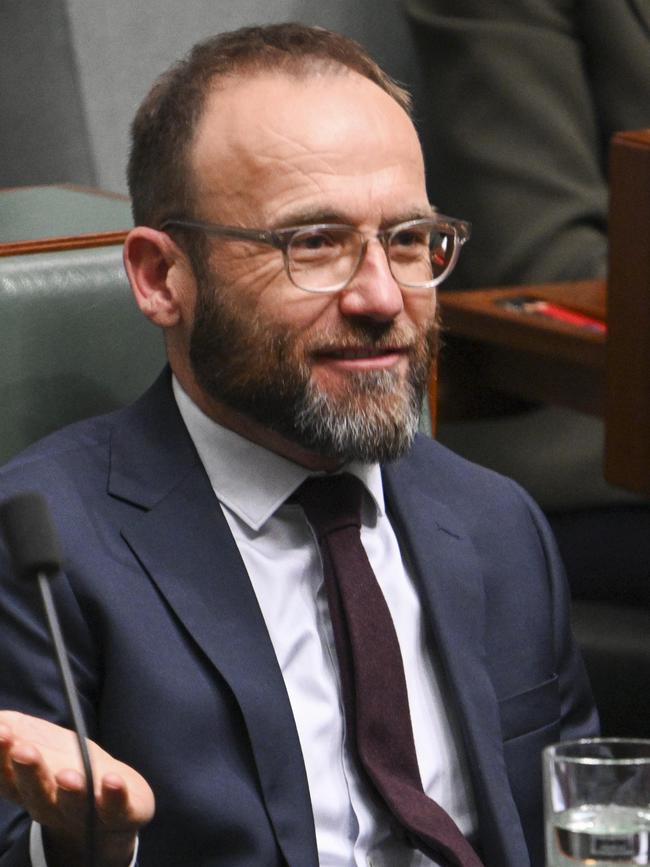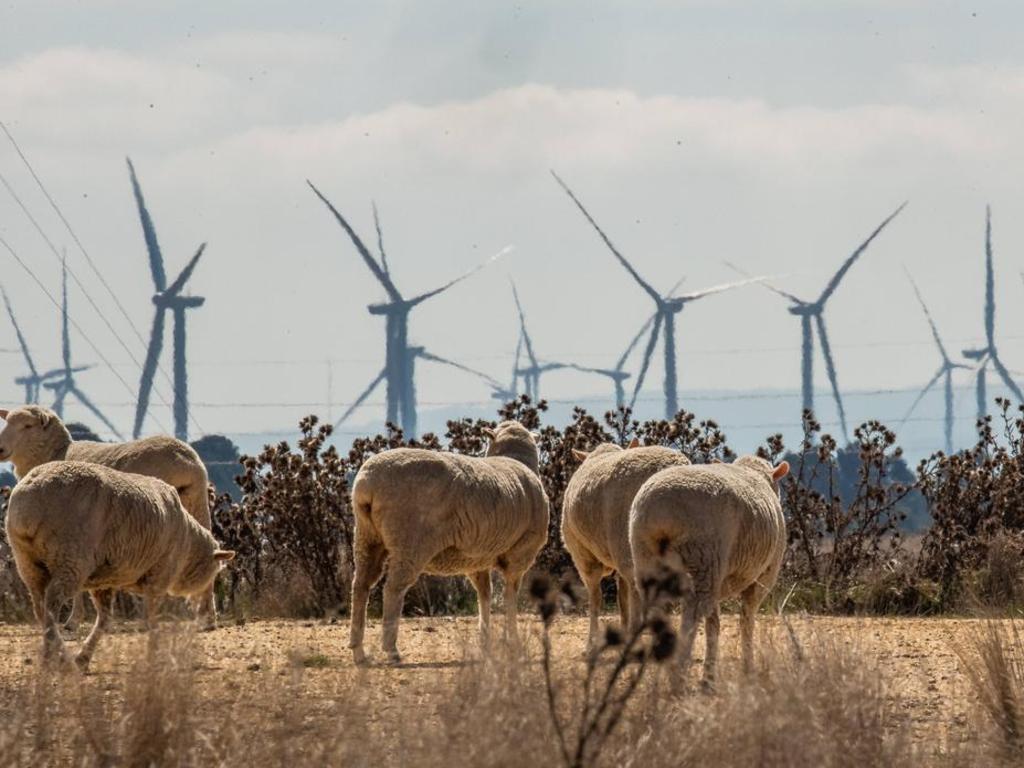A reality check for climate alarmists: net zero is impossible
It is time to take the ideology and fantasy out of energy policy and address the truth. The climate and renewables zealots are in denial.

Forrest’s prescription promises “economic growth over generations” along with “full employment” and a “pristine environment” with “cheap energy being produced everywhere in our country”. Too easy; the only resource lacking, he says, is the “courage to get on with it”.
To deliver this energy and environmental nirvana he wants the coal, oil and gas industries to be “taxed out of existence”. Strangely, he does not include his own iron ore industry, which relies on fossil fuels for extraction, transport and blast-furnacing into iron and steel.
This simplistic combination of rampant alarmism and magic pudding economics is not rare. It is omnipresent in the rantings of Swedish environmental activist Greta Thunberg, Greens leader Adam Bandt, Extinction Rebellion and the teals, but it is unusual coming from a titan of industry, albeit one in receipt of substantial government subsidies here and abroad for “green hydrogen” projects.


We were warned by the weather bureau and climate alarmists last spring that this summer would be extraordinarily hot and dry. Given that all turned out to be a damp squib, they are turning their forecasts a little further afield with the Nine Entertainment newspapers (in cahoots with the Climate Council) offering an online tool this week to show us how many days over 35C we can expect in our suburbs in 2050 and 2090.
It is as if these people have become so bored by the lack of public debate about their Chicken Little claims that they have opted for self-parody to amuse themselves. Not only do they seek to raise the fear of Gaia over these long-range predictions, they implore us to “take action” to make sure our particular postcode can keep the mercury below 35C for a day or two more in the summer of 2090.
The Greens voters of Penrith and Broadmeadows might be pretty cheesed off in 2090 when it still turns out that it’s only those affluent coastal postcodes that get the sea breeze. The Age and The Sydney Morning Herald might encounter some sweaty subscribers with buyer’s remorse in the autumn of 2091.
In this climate of fearmongering and idiocy we need more reality checks. For starters we might ease the sense of crisis by levelling with the public that the prime reason many heat records have been broken in Australia in recent decades is because the Bureau of Meteorology revised most of its early temperature records downwards and because it ignores any records before 1910, thereby eradicating from calculations known hot periods such as the Federation drought. (It argues this was scientifically valid and necessary, but the fact it has been done is worth sharing more widely, for context if nothing else.)
Still, temperatures will do what they will, and global emissions are still rising. It is a scientific fact that whatever Australia does on emissions cannot affect global climate, and natural climate variations can easily override any human interventions, good or bad. From the upper echelons of state and federal governments we are fed two strands of argument that are seldom challenged. The first is the alarmism and the other tells us renewables are the only way to deliver the emissions cuts required.
“So, while moving towards a renewable grid is a massive transformation,” Climate Change and Energy Minister Chris Bowen says, “it is necessary for our economy, for our energy security and for the climate. Stop the delay, distraction, deception and denial. Get with the program.”
Clearly we need to address the practical reality of moving to net zero, and the pretence that this can be done easily without a heavy economic cost. We can start with the International Energy Agency, which works closely with the UN and is all on board with the net zero zeitgeist. In its Global Energy Transitions Stocktake it recognises that “half the emission reductions needed to reach net zero come from technologies not yet on the market”. Got that? We cannot ever get to net zero unless we develop technologies that are “under development” or yet to be invented.
Czech-Canadian scientist Vaclav Smil is the author of 40 books mainly focused on outlining complex realities and dilemmas. His 2022 book How the World Really Works contains bad news for those climate activists who just want to “do something” about climate change and believe the solution is easy – just decarbonise.

“The real wrench in the works,” warns Smil, is that “we are a fossil-fuelled civilisation whose technical and scientific advances, quality of life and prosperity rest on the combustion of huge quantities of fossil carbon, and we cannot simply walk away from this critical determinant of our fortunes in a few decades, never mind years.”
He is not a complete pessimist, just anchored in the reality: “Complete decarbonisation of the global economy by 2050 is now conceivable only at the cost of unthinkable economic retreat, or as a result of extraordinarily rapid transformations relying on near miraculous technical advances.”
This is because we rely on fossil fuels not just to generate most of our electricity but to fuel our road, rail, air and sea transport, heat homes, power industry, mine minerals, create chemical and plastic products, manufacture fertilisers and grow food. While wealthy countries such as ours can make some expensive changes to improve efficiency and reduce emissions, more than half of the world’s population is still racing to get the energy it needs, massively expanding global energy demand.
“Annual global demand for fossil carbon is now just above 10 billion tons a year,” writes Smil, “a mass nearly five times more than the recent annual harvest of all staple grains feeding humanity, and more than twice the total mass of water drunk annually by the world’s nearly eight billion inhabitants – and it should be obvious that displacing and replacing such a mass is not something best handled by government targets for years ending in zero or five.”
Other practical realities deepen the dilemma. The challenges for renewables relate largely to scale and efficiency. Smil again: “Large nuclear reactors are the most reliable producers of electricity, some of them now generate it 90-95 per cent of the time, compared to about 45 per cent for the best offshore wind turbines and 25 per cent for photovoltaic cells in even the sunniest of climates – while Germany’s solar panels produce electricity only about 12 per cent of the time.”
Other researchers have tried to quantify the mineral resources needed to manufacture enough turbines, solar panels, batteries and electric engines to get to net zero.
In his paper Mining for Net Zero: The Impossible Task, Alan G. Jones finds we will have to dramatically increase the mining effort, which is already higher than at any time in history.
“For example,” Jones writes, “one estimate is that there needs to be as much copper mined over the next 20-25 years as has been mined to date.”
Another geoscientist who has been based in Finland and Australia, Simon Michaux, has warned about the scale of replacing fossil fuel energy with renewables and hydrogen. “So, we are discussing bringing in a power system significantly larger than the one we have now,” Michaux reminds us, “with power systems that are not as effective and more expensive.”
Michaux has run detailed calculations on all the key resources such as lithium, nickel, copper and cobalt required globally, and the amount we are capable of extracting. The results are sobering.
“We don’t have enough mining production or mineral reserves to manufacture the first generation of renewable technology,” he finds.
But it is even worse than that because, as he points out, all the kit, from wind turbines to solar panels, from electric engines to batteries, will have to be replaced within 10 to 25 years, and again and again.
Chris Greig, a senior research scientist from Princeton University in the US, has costed the transition for Net Zero Australia. “Such is the level of investment required to build out new-generation storage facilities such as batteries and pumped-hydro, and transmission lines, that up to $1.5 trillion will need to be deployed by 2030 to put Australia on track to meet its 2050 commitments,” declares the study he co-authored. That is an amount proximate to the size of our entire GDP to be invested over just the next six years. Good luck.
And if the resources, innovation and funding required do not make this all fanciful enough, try considering the land, approvals and practicality of installing it. Bowen has boasted about needing to install 22,000 500-watt solar panels every day for eight years, as well as more than one 7-megawatt wind turbine every day connected by at least 10,000km of new transmission lines across the same period.
Most of this will be in regional and coastal communities that do not want them. And all of it, spread diffusely across the country, will be vulnerable to disruption by storms and bushfires.
Yet they seriously try to argue that nuclear power, sited compactly on existing industrial/generation sites, requiring no additional transmission lines, will be too slow and expensive.
It is time to take the ideology and fantasy out of energy policy and address the reality.
The climate and renewables zealots are in denial.






One of Australia’s richest mining magnates, Andrew “Twiggy” Forrest, says you can already feel climate change, it has caused “deaths, devastation and hardship” all around the world already, Australia has “run out of time” and he knows how to fix it.